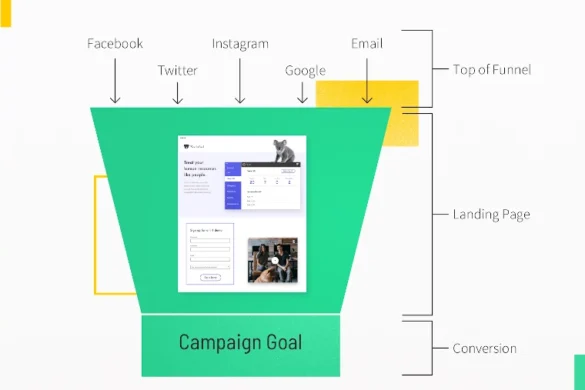Table of Contents
In the ecommerce industry, even a tiny shift in how customers act or what’s hot in the market can affect how much money you bring in. So, if you’re not keeping tabs on the latest trends, you’re probably losing out on some cash.
Staying ahead of the game in online selling is crucial to stay competitive and keep your customers satisfied. Here, we’ll outline 10 ecommerce trends to keep you in the loop with the market in 2024.
Keep going to find out more! Or, if you’d like to talk to a pro about the latest ecommerce trends, give us a ring at 255 783 957 836!
1. Increased buyer purchasing power
At the top of our ecommerce trends list is the rise in purchasing power for buyers.
Inflation is down, and employment has increased, leading to a more stable cost of essentials. With a variety of choices and shifts in the economy, customers now have greater control over their purchasing decisions.
This implies that you should:
- Set competitive prices for your products.
- Concentrate on your marketing efforts.
- Provide excellent customer service experiences.
2. Artificial intelligence (AI)
As you’re aware, AI is making its mark across all sectors and becoming a crucial part of various workflows, including those in ecommerce.
In the ecommerce realm, AI finds application in multiple ways. For instance, you can employ AI to recommend additional products to users based on their orders:

Alternatively, you can leverage AI to generate content and product descriptions, tools like Chat GPT:

Additionally, platform-specific tools like Shopify Magic can assist in store management. Of course, it’s essential to double-check AI outputs with human oversight, but these tools undoubtedly speed up your tasks.
3. Personalized Ads
People like stuff that fits their groove – content, tips, and things that suit their style. It’s not just about being attentive; it’s about showing you give a hoot about their ride.
Personalizing can take many forms. A personalized email suggesting some cool stuff from a recent drop is an easy trick to up the interaction. The key is to make users think you’re chatting just with them, not throwing words at a big crowd.
4. New Ways to Pay
People roll with different payment vibes. To stop them from ditching their cart at checkout, you gotta serve up a bunch of payment options.
Here are the usual suspects:
- PayPal
- Credit and debit cards
- AfterPay or those pay-by-installment schemes
- Bank transfer and deposit
- E-checks (Electronic checks)
- Cryptocurrency
You don’t need to roll out the red carpet for every single one, but having more than just a single trick up your sleeve is a smart move.
5. Content Takes the Crown
Buyers are flexing their purchasing muscles more than ever. They’re doing the rounds, calling the shots, and are pretty savvy about the same old ads and marketing tricks. What they crave now is a feel-good factor about their buys. And that’s where content struts in.
In the ecommerce arena, your content is the real MVP. It’s the primary tool for companies to showcase their vibe without the hard sell. Just throwing up product pages won’t cut it – you’ve got to sprinkle in some extra content that spills your brand’s personality and caters to what the customers dig.
This trend in ecom is your golden ticket to building trust and ensuring they pick you over the other players.
6. Automated transactions and Payoffs
Here’s another standout trend in the ecommerce industry game – going automatic with transactions and payments. When you’ve got the lowdown on customer deets – their accounts, payment methods, and addresses – it smooths out the checkout hustle and nudges them to come back for more.
Throwing in auto-subscriptions for products is a win for users who regularly stock up:
Bagging more subscriptions is the secret sauce to bumping up your regular earnings in 2024 and beyond.
7. Omnichannel marketing strategies
People don’t rush into decisions these days. They take their sweet time, checking out different companies before pulling the purchase trigger. So, in 2024, playing the exposure game means using more than one trick.
Let’s be real, nobody spots an ad and instantly decides to go overboard. Clients are aware that there are a plethora of brands competing for their business. Those that grab attention are the ones who succeed.
Here are a few creative ways to market your ecommerce store:
- Email marketing
- Search engine optimization (SEO) and your website
- Social media
- Pay-per-click (PPC) ads
8. Consumer privacy is essential
With changes like kicking third-party cookies and adblockers to the curb, keeping customer privacy on lockdown is a must in ecommerce industry. More laws are cropping up to shield user privacy, and the ecommerce scene is no exception.
Come 2024, companies need to be on the ball about how they handle customer privacy to earn trust and play by the rules.
Here are some moves to focus on user privacy:
- Lay it out – let users know what data you’re collecting and storing
- Give people the power to ignore those cookies if they want
- Only collecting necessary data
- Encrypt and protect any sensitive data (like payments)
Having a secure website and checkout process is a no-brainer. And shout it out to users so they know you’re serious about keeping their stuff under wraps.
9. The Expanding B2B Ecommerce Industry Arena
Ecommerce isn’t just a one-way street from business to consumer (B2C) anymore. More and more B2B players are hopping on the ecommerce industry train for their necessities. This shift in the buying game makes it smoother for B2B reps to grab what they need for their company.
In the B2B ecommerce journey, automation steals the show – covering everything from accounts payable and receivable to reordering and fulfillment. If your sights are on B2B customers, giving your ecommerce game a facelift or tossing in some fresh options could be your ticket to staying in the game.
10. Influencer marketing is here to stay
Influencers have been riding the wave for over a decade, but audiences today are savvy to the whole brand deal and ad game. That doesn’t mean ads are out of the picture – in fact, they’re the secret sauce for users to cozy up to a company through a familiar face.
People tag along with influencers for tips, inspo, and advice, among other things. When an influencer throws your product into the mix, even if it’s a paid gig, they’re hitching their name to your brand and giving you the thumbs up. For the audience, that’s way more legit than your run-of-the-mill ad.
11. Subscription-Based Models
Subscription-based ecommerce models are on the rise, offering customers curated experiences through regular deliveries. This trend not only boosts customer loyalty but also provides businesses with a steady and predictable revenue stream.
12. Data-Driven Decision-Making
In the data-driven era, analytics play a pivotal role in ecommerce industry. Businesses are utilizing customer data to make informed decisions, from inventory management to targeted marketing strategies, ensuring a more personalized and efficient approach.
In conclusion, the ecommerce industry in 2024 is characterized by dynamic trends that are reshaping the way businesses operate and connect with consumers. Embracing these trends is not just a strategy for survival but a pathway to thriving in the competitive online marketplace.
How can businesses implement AI for personalized customer experiences?
Implementing AI requires analyzing customer data, utilizing machine learning algorithms, and integrating AI solutions into the ecommerce platform.
Are subscription-based models suitable for all types of ecommerce businesses?
While not suitable for every business, subscription models work well for those offering products or services with recurring needs or interests.
Why is customer trust crucial in the ecommerce industry?
Trust is essential as it influences purchasing decisions. Positive customer reviews and transparent business practices contribute to building trust.







Add your first comment to this post